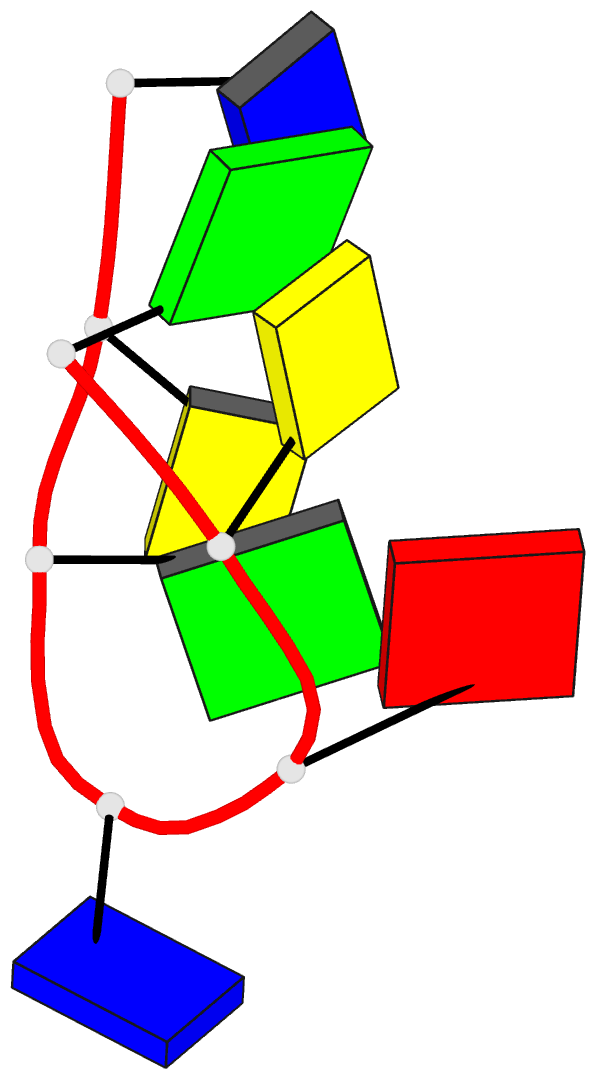Summary information and primary citation
- PDB-id
-
184d;
SNAP-derived features in text and
JSON formats
- Class
- DNA
- Method
- X-ray (1.8 Å)
- Summary
- Self-association of a DNA loop creates a quadruplex:
crystal structure of d(gcatgct) at 1.8 angstroms
resolution
- Reference
-
Leonard GA, Zhang S, Peterson MR, Harrop SJ, Helliwell
JR, Cruse WB, d'Estaintot BL, Kennard O, Brown T, Hunter
WN (1995): "Self-association
of a DNA loop creates a quadruplex: crystal structure of
d(GCATGCT) at 1.8 A resolution." Structure,
3, 335-340. doi: 10.1016/S0969-2126(01)00165-4.
- Abstract
- Background: The flexibility of DNA enables it to adopt
three interconvertible types of duplex termed the A-, B-
and Z-forms. It can also produce hairpin loops, triplex
structures and guanine-rich quadruplex structures.
Conformational flexibility assists in the tight packaging
of DNA, for example in chromosomes. This is important given
the large quantity of genetic information that must be
packaged efficiently. Moreover, the ability of DNA to
specifically self-associate or interact with complementary
sequences is fundamental to many biological processes.
Structural studies provide information about DNA
conformation and DNA-DNA interactions and suggest features
that might be relevant to how the molecule performs its
biological role.
Results: We have characterized the structure of a synthetic
heptanucleotide that folds into a novel loop structure. The
loop is stabilized by association with a cation, by
intra-strand hydrogen bonds between guanine and cytosine
that are distinct from the normal Watson-Crick hydrogen
bonds, and by van der Waals interactions. Two loops
associate through the formation of four G.C pairs that
exhibit pronounced base-stacking interactions. The
formation of a symmetric A.A base pair further stabilizes
loop dimerization. Stacking of the A.A pair on a
symmetry-related A.A pairing assists the formation of a
four-stranded assembly. A T.T pairing is also observed
between symmetry-related loops.
Conclusions: This analysis provides a rare example of an
experimentally determined non-duplex DNA structure. It
provides conformational detail relevant to the tight
packaging or folding of a DNA strand and illustrates how a
cation might modulate phosphate-phosphate repulsion in a
tightly packed structure. The observation of base quartets
involving G.C base pairs suggests a further structure to be
considered in DNA-DNA interactions. The structure also
provides detailed geometries for A.A and T.T base
pairs.





